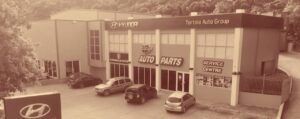When sales goals are met we often gloss over possible profit leaks caused by process failures, poor practices and operational errors. But when sales decline, we begin to worry about how to address and reduce these losses.
In this article we’ll focus on three indicators that are essential to detect losses in the Parts Department.
1. Parts Obsolescence

Why is this indicator important? Immobilized parts imply high costs for the dealership (insurance, storage, maintenance, inventory counting, etc.) The obsolescence index shows you the percentage of inventory made up of obsolete parts.
Calculate your indicator:
Parts obsolescence = Amount of parts with obsolete or semi-obsolete activity / Total amount of parts * 100
Reference
[su_table responsive=”yes” alternate=”no”]
| Automobiles and motorcycles | Agricultural Equipment | |
| Semi-obsolete | 7 a 11 meses | 25 a 36 meses |
| Obsolete | 12+ months | 37+ months |
[/su_table]
Benchmark: <20%
How to improve this KPI?
- Use the ABC Crossing report in Autologica DMS to see your obsolete and semi-obsolete parts, to create promotions and marketing campaigns.
- Analyze pats that are not selling at one location and transfer them to another where they have a greater chance of being sold.
Do you know Autologica Sky DMS?
Autologica Sky DMS is a software for the automotive and machinery industry with all the functions and integrations that professional dealerships need.
» Request a demo
2. Emergency orders
Why is this indicator important? Emergency orders usually have a surcharge associated with the urgency of the shipment. Reducing emergencies helps you avoid overpaying for parts. It is essential that you create a balance between on-hand inventory and the cost of maintaining that inventory.
Calculate your indicator:
(Emergency orders / Total orders) * 100
Benchmark: <10%
How to improve this KPI?
- Autologica DMS has an Order Suggestion feature that, based on system data (inventory at each store, latest transactions, pending orders, trends, etc.), calculates and suggests which parts to order in order to maintain an ideal inventory that satisfies customer purchases.
3. Parts-to-Labor Ratio
This indicator can be used in both the Parts and Service Departments.
Why is this indicator important? It tells you how much labor is billed in relation to what is billed for parts. This indicator is essential to know if the Service Department depends on parts sales, service and labor sales, or if you keep the right balance.
Calculate your indicator:
Parts-to-Labor Ratio = Parts sales / Labor sales
Benchmark: 0.8 (i.e. for every $100 in labor sales you have $80 in parts sales)
How to improve this KPI?
Let’s look at an example: The workshop has monthly sales of $480,000 in parts and $180,000 for Labor; that is, $2.6 of parts for every $1 of labor.
This means that the Service Department depends largely on the sale of parts, and that despite the high demand for parts your service advisors are not generating more jobs. If service advisors can develop sales skills they can get customers who come in to the workshop to request service work, which will help improve the indicator.
Conclusion
These key indicators need to be measured regularly to make decisions that will improve the department’s profitability. of the department and the dealership. Everything that can be measured can be improved; this premise must be reflected in the dealership’s culture and supported by the right technology.
With Autologica DMS you can automatically measure and improve the dealership’s KPIs.






